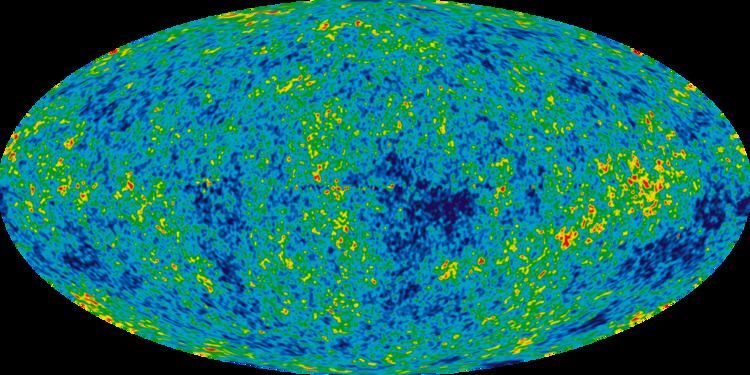 | ||
The Sunyaev–Zel'dovich effect (often abbreviated as the SZ effect) is the result of high energy electrons distorting the cosmic microwave background radiation (CMB) through inverse Compton scattering, in which the low energy CMB photons receive an average energy boost during collision with the high energy cluster electrons. Observed distortions of the cosmic microwave background spectrum are used to detect the density perturbations of the universe. Using the Sunyaev–Zel'dovich effect, dense clusters of galaxies have been observed.
Contents
Introduction
The Sunyaev–Zel'dovich effect can be divided into:
Rashid Sunyaev and Yakov Zel'dovich predicted the effect, and conducted research in 1969, 1972, and 1980. The Sunyaev–Zel'dovich effect is of major astrophysical and cosmological interest. It can help determine the value of the Hubble constant. To distinguish the SZ effect due to galaxy clusters from ordinary density perturbations, both the spectral dependence and the spatial dependence of fluctuations in the cosmic microwave background are used. Analysis of CMB data at higher angular resolution (high l values) requires taking into account the Sunyaev–Zel'dovich effect.
Current research is focused on modelling how the effect is generated by the intracluster plasma in galaxy clusters, and on using the effect to estimate the Hubble constant and to separate different components in the angular average statistics of fluctuations in the background. Hydrodynamic structure formation simulations are being studied to gain data on thermal and kinetic effects in the theory. Observations are difficult due to the small amplitude of the effect and to confusion with experimental error and other sources of CMB temperature fluctuations. However, since the Sunyaev–Zel'dovich effect is a scattering effect, its magnitude is independent of redshift. This is very important: it means that clusters at high redshift can be detected just as easily as those at low redshift. Another factor which facilitates high-redshift cluster detection is the angular scale versus redshift relation: it changes little between redshifts of 0.3 and 2, meaning that clusters between these redshifts have similar sizes on the sky. The use of surveys of clusters detected by their Sunyaev–Zel'dovich effect for the determination of cosmological parameters has been demonstrated by Barbosa et al. (1996). This might help in understanding the dynamics of dark energy in forthcoming surveys (SPT, ACT, Planck).
